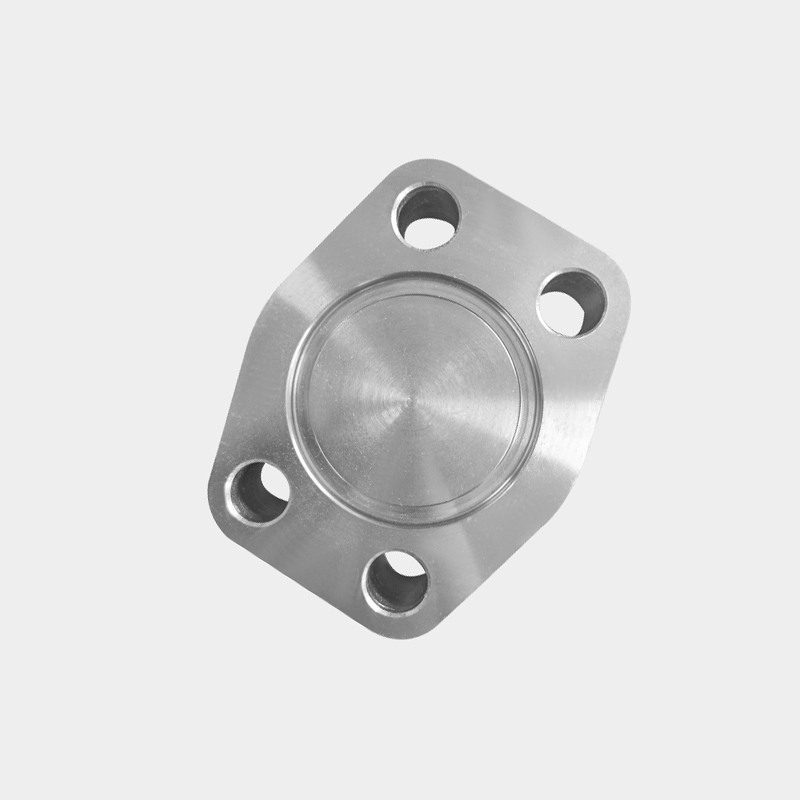Call Us
+86-13486669457Incorporating SAE B blanking plates into a hydraulic system design can offer several potential benefits:
Sealing: SAE B blanking plates are engineered with meticulous precision to serve as robust seals within hydraulic systems. Their design ensures an airtight and watertight fit, effectively preventing even the slightest fluid leakage. This sealing capability is not only crucial for maintaining operational efficiency but also for upholding system integrity in demanding industrial environments. By preventing leaks, blanking plates minimize fluid loss, preserve hydraulic fluid quality, and safeguard sensitive components against damage or corrosion, thereby prolonging the service life of the entire system.
Pressure Regulation: The strategic placement of blanking plates empowers hydraulic system designers to exert precise control over pressure levels. By selectively closing off certain ports, engineers can manipulate the flow of hydraulic fluid to regulate pressure distribution across the system. This capability is invaluable for achieving optimal performance, stability, and safety in diverse operational scenarios. Whether fine-tuning pressure settings for delicate maneuvers or stabilizing pressure fluctuations during heavy-duty tasks, blanking plates provide a versatile tool for maintaining hydraulic systems at peak efficiency.
Flexibility: Blank plates offer unparalleled flexibility in hydraulic system design, allowing for dynamic adaptation to evolving requirements and conditions. Their modular nature enables engineers to reconfigure system layouts, expand capacity, or integrate new components with ease. This versatility simplifies equipment upgrades, facilitates system expansions, and accommodates changes in operational parameters without necessitating extensive modifications or downtime. As a result, hydraulic systems equipped with blanking plates exhibit greater resilience, agility, and scalability to meet the demands of modern industrial applications.
Prevention of Contamination: Blank plates play a pivotal role in safeguarding hydraulic systems against contamination, a pervasive threat that can compromise performance and reliability. By sealing off inactive ports, blanking plates create an impermeable barrier that shields sensitive internal components from external pollutants, moisture, or debris. This proactive approach to contamination control minimizes the risk of fluid degradation, component wear, and system malfunctions, thereby ensuring uninterrupted operation and prolonging the maintenance intervals of hydraulic equipment.
Safety: The implementation of blanking plates is synonymous with enhanced safety within hydraulic systems, where fluid leaks pose significant hazards to personnel, equipment, and the environment. By effectively sealing off unused ports, blanking plates mitigate the risk of hydraulic fluid leakage, spills, or sprays that could lead to slip-and-fall accidents, equipment malfunctions, or environmental contamination. This proactive risk mitigation strategy promotes a safer work environment, reduces liability exposure, and fosters compliance with stringent safety regulations, thereby safeguarding the well-being of personnel and preserving the reputation of organizations.
Space Optimization: In the realm of hydraulic system design, every square inch counts, making space optimization a critical consideration for engineers and operators alike. Blank plates excel in this regard, allowing hydraulic systems to achieve maximum functionality within limited physical footprints. By effectively closing off redundant ports, blanking plates eliminate clutter, streamline component layouts, and optimize space utilization within equipment enclosures, machinery compartments, or industrial installations. This spatial efficiency not only enhances equipment aesthetics but also facilitates ease of access for maintenance personnel, thereby improving serviceability and minimizing downtime.


 中文简体
中文简体
 English
English









